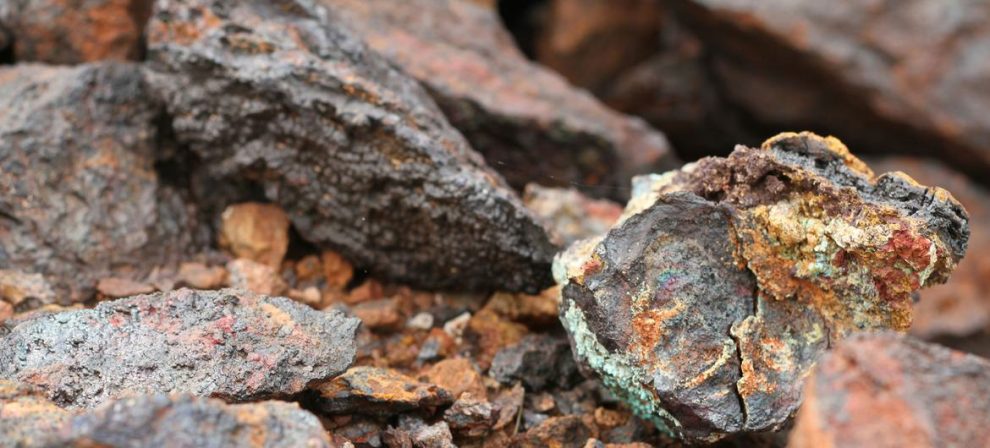Energy experts say that mining rare minerals can be a dirty process, ravaging the environment and leading to human rights violations. However, if the world is to move away from fossil fuels, “energy transition minerals” must be acquired, so we must limit the damage when mining them.
We know that we are in the midst of a climate crisis: temperatures are rising, the weather is becoming more extreme, and this is having a negative effect on the economy, the environment and society in general.
While many will argue that we are not moving fast enough to tackle the climate emergency, the energy sector is beginning to move away from energy sources that rely on large, unclean power plants that emit greenhouse gases, and towards cleaner sources such as solar and wind.
However, to power a low-emissions world, we will need to extract many more minerals, and this is often a dirty process.
Here’s what you need to know about “energy transition minerals” and how we can limit the damage caused by extracting them from the ground.
Rocks containing copper, cobalt and nickel from a mine in Western Australia.
1 Energy transition minerals: what they are and where they are found
Transition minerals are natural substances ideal for use in renewable technologies. Lithium, nickel and cobalt are basic components of batteries such as those in electric vehicles. Rare earth elements are part of the magnets that turn wind turbines and electric motors. Copper and aluminium are used in large quantities in power transmission lines.
They are found in rocks all over the world, but a handful of countries and companies control their extraction.: China mines most of the rare earths, Indonesia most of the nickel, and the Democratic Republic of the Congo most of the cobalt. Many energy transition minerals are also found in a group of landlocked developing countries, some of which are among the least developed nations in the world.
2 A market that is growing massively
The shift to a clean energy system will trigger a massive increase in the need for these minerals. Between 2017 and 2022, demand for lithium tripled, nickel increased by 40% and cobalt soared by 70%, according to the International Energy Agency.
For the world to fully embrace renewable energy and achieve net-zero greenhouse gas emissions, The use of energy transition minerals will need to increase sixfold by 2040. This would raise the market value of transition minerals to more than $400 billion.

Copper mine in Tabriz, Iran.
3 The economies of mineral-rich countries could benefit…
With effective policies and safeguards, the extraction of these substances could usher in a new era of sustainable development, creating jobs and helping countries reduce poverty. “For some countries, energy transition minerals could be absolutely transformative, under the right conditions,” said Ligia Noronha, UN Under-Secretary-General and Head of the New York Office of the United Nations Environment Programme (UNEP).UNEP).
4 …But there are several concerns
“We cannot repeat the mistakes of the past with systematic exploitation of developing countries reduced to the production of basic raw materials,” warned the UN recently. Secretary General of the UN, António Guterres. Human rights groups have warned of rights abuses throughout the industry, including mines in developing countries. They also Cases of forced labour have been reported in some mining sites.
Mining can devastate the environment if done unsustainably, causing deforestation, water pollution and desiccation. For example, To extract one ton of lithium, two million liters of water are neededBut around 50% of global copper and lithium production is concentrated in water-scarce areas.

Lithium battery recycling workshop.
5 The UN works to ensure sustainable mineral extraction
A UN-wide effort is underway to ensuring that minerals from the energy transition are managed fairly and sustainablyThe push was launched in 2023, with the aim of creating trust, reliability and sustainability in the supply chains of these minerals.
In the Democratic Republic of the Congo, the United Nations Environment Programme is working with authorities to develop a national plan for the extraction of minerals, such as cobalt. The plan will focus on minimising the environmental impact of mining and exploring whether local and international institutions can help resolve conflicts surrounding mineral extraction.
The sixth session of the United Nations Environment Assembly took place from 26 February to 1 March 2024 at UNEP headquarters in Nairobi, Kenya, and concluded with the adoption of 15 resolutions to advance joint action to address the triple planetary crisis: climate change, nature and biodiversity loss, and pollution and waste.







![[Img #74683]](https://thelatestnews.world/wp-content/uploads/2024/12/The-main-mistakes-to-avoid-when-betting-on-electronic-sports-150x150.jpg)








Add Comment